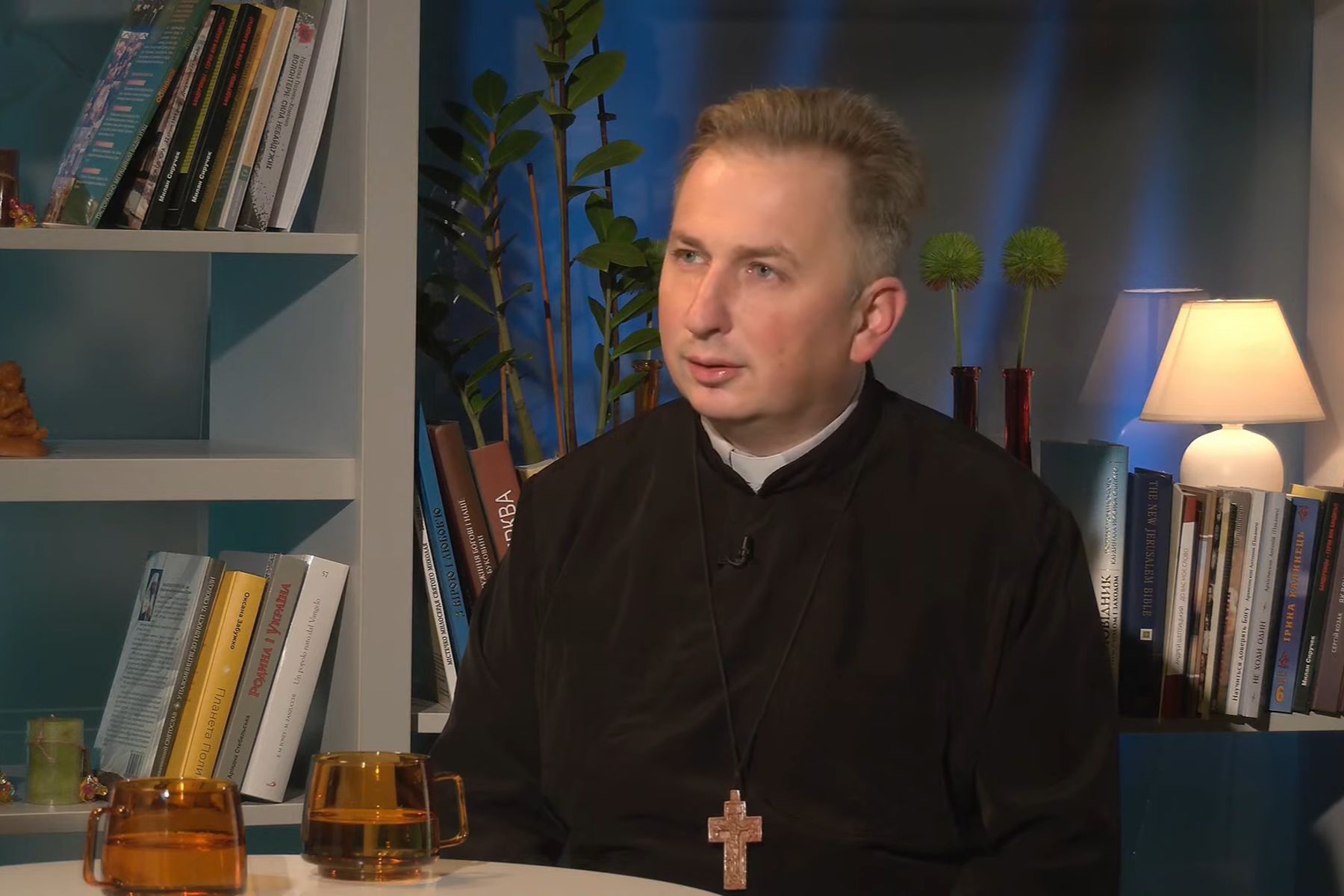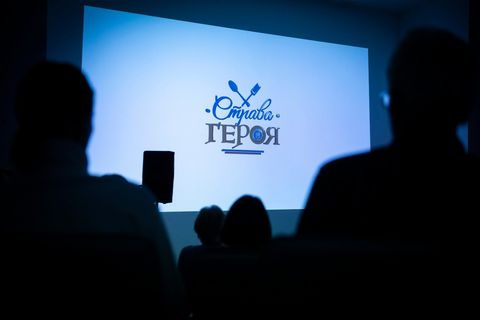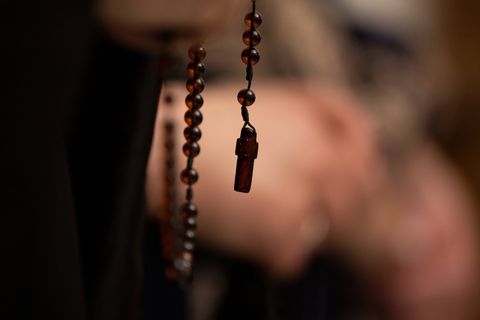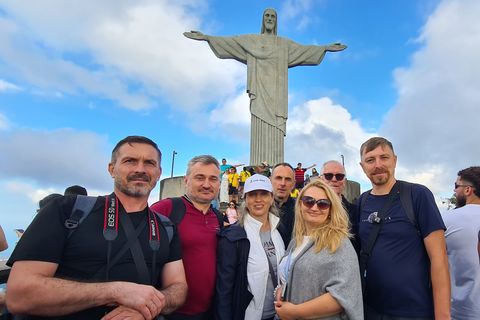“People who perform in the choir are icon painters” – Father Andriy Bun on Chanting in the Liturgy
The choir director of the Drohobych Theological Seminary of the Blessed Martyrs Severinus, Vitaliy and Yakym, and the head of the Youth Commission of the Sambir-Drohobych Eparchy, Fr. Andriy Bun, explained the importance of church chanting in the church in the program “Open Church” on Zhyve Television.

“Singing is a manifestation of human emotions, which are thus accentuated. A person opens their life with singing, because a mother sings to her child over the cradle. All the rites performed by our people are always accompanied by singing. Probably, this is why our people are so musical. It is a wonderful gift from God for Ukrainians to have such a grace to chant in the church, emphasizing prayer through singing. The one who sings prays twice,” the priest noted.
He explained that “chanting in the church is prayer; therefore, those who chant in the church pray.”
“Our church chanting, our devotional Ukrainian music stems from Byzantium, from unison singing, which is filled with extraordinary spiritual depth from the Holy Spirit... It is very difficult to achieve unity in unison singing within a choir, because its essence lies not in high vocal skills, but in a person’s spirituality. The dictum of this singing is ‘with one heart and one voice,’” the priest continued.
“When an icon painter writes an icon, he should start with a pure heart by confessing and fasting. Similarly, people who sing in a choir are like icon painters, because an icon can be created either with paint or with a human voice through musical expressiveness,” Fr. Andriy compared.
He added: “There is also a special grace given by the Holy Spirit to both iconographers and singers, enabling them to convey the depth of God’s word through music.”
“Ukrainian devotional music has evolved over-time—from unison to polyphony, including three-voice compositions, multi-voice arrangements, and part songs. Sometimes eight voices were used, as well as two-voice prayer concerts and liturgical pieces. Even contemporary music, which is a reflection of the events of our time. Although it may not have a smooth harmony, no matter what kind of music the choir performs, the choristers must always remember that they are not an academic group—they are those who pray,” said the seminary choir’s regent, Fr. Andriy Bun.
He concluded that to convey the essence of prayer, a person must experience it deeply: “Church choir members must most draw as close to God as possible so they can share this connection with those who come to church to pray.”
The UGCC Department for Information


